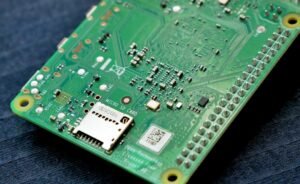ML Lifecycle
The ML lifecycle refers to the end-to-end process of developing and deploying machine learning models. From data collection and preprocessing to deployment and monitoring, each step in the ML lifecycle plays a crucial role in creating effective and efficient models. By following this lifecycle, organizations can ensure their machine learning projects are successful and yield valuable insights.
Key Takeaways:
- The ML lifecycle encompasses various stages, including data collection, preprocessing, model training, evaluation, deployment, and monitoring.
- Each stage in the ML lifecycle is important for creating accurate and robust machine learning models.
- Proper data preprocessing and feature engineering can greatly impact the performance of machine learning models.
- Regular monitoring and evaluation of deployed models are essential to ensure they remain effective and accurate.
- The ML lifecycle is an iterative process, often involving revisions and updates to models based on feedback and changing requirements.
Data Collection and Preprocessing
In the ML lifecycle, data collection and preprocessing are fundamental stages that lay the foundation for building effective models. **Data collection** involves gathering relevant data sources, which can be acquired from various internal and external sources. *Accurately labeling and annotating the collected data is crucial for training ML models.* Following data collection, the data must be preprocessed, which involves cleaning, transforming, and manipulating the data to ensure its quality and usefulness for training the models.
Table 1: Data Collection Techniques
| Data Collection Technique | Description |
|---|---|
| Web Scraping | Gathering data from websites using automated tools. |
| Sensor Data Collection | Collecting data from IoT devices or sensors in real-time. |
| Surveys | Collecting data by conducting surveys and questionnaires. |
Data preprocessing involves transforming the raw data into a format suitable for training ML models. *This step may include handling missing values, scaling features, and normalizing data to improve performance.* Additionally, feature engineering plays a vital role in this stage, where domain knowledge is leveraged to derive meaningful features that can enhance model accuracy.
Model Training and Evaluation
Once the data is prepared, the ML lifecycle moves on to model training and evaluation. **Model training** is the process of feeding the preprocessed data to the chosen ML algorithm to create a predictive or classification model. *During training, the model learns patterns and relationships within the data.* After training, it is essential to evaluate the model’s performance using appropriate metrics and validation techniques to ensure its accuracy and generalization ability.
Table 2: Evaluation Metrics
| Evaluation Metric | Description |
|---|---|
| Accuracy | Measures the percentage of correct predictions. |
| Precision | Measures the proportion of true positive predictions in relation to all positive predictions. |
| Recall | Measures the proportion of true positive predictions in relation to the actual positive samples. |
An ML model may undergo multiple training iterations, with adjustments made to fine-tune its performance. *Hyperparameter tuning and optimization techniques can enhance the model’s accuracy and prevent overfitting.* It is vital to use appropriate evaluation techniques to assess and compare the performance of different models before finalizing the one to be deployed.
Model Deployment and Monitoring
Model deployment is the stage where the trained model is put into production and made available for predictions on new, unseen data. *Choosing the right deployment strategy, such as edge computing or cloud deployment, depends on various factors, including data privacy, latency requirements, and scalability.* After deployment, continuous model monitoring is crucial to identify any performance issues or concept drift, especially as new data becomes available over time.
Table 3: Deployment Strategies
| Deployment Strategy | Description |
|---|---|
| Cloud Deployment | Deploying the model on cloud platforms like AWS or Azure. |
| Edge Computing | Deploying the model on devices at the network edge for real-time predictions. |
| Hybrid Deployment | Combining cloud and edge deployment for optimized performance. |
Monitoring deployed models enables organizations to ensure their continued accuracy and effectiveness. *Leveraging techniques like synthetic data injection and anomaly detection can help identify potential issues before they impact predictions.* Continuous monitoring also allows for proactive model updates and improvements based on feedback, changing requirements, or patterns discovered in the monitored data.
In summary, the ML lifecycle is a crucial process for developing and deploying effective machine learning models. Each stage, from data collection and preprocessing to model training, evaluation, deployment, and monitoring, plays a vital role in the overall success of ML projects. By following the ML lifecycle and leveraging the appropriate tools and techniques, organizations can unlock insights and make data-driven decisions that drive business success.

Common Misconceptions
Misconception 1: Machine Learning is a black box
One common misconception about machine learning (ML) is that it is a black box, with no transparency or explainability. However, this is far from the truth. ML models can be interpreted and explained to varying degrees, depending on the algorithm used and the techniques applied.
- ML models can provide insights into which features are most important in making predictions
- Model interpretability techniques like SHAP values can help understand the contribution of each feature in the prediction
- Explanations can be generated to understand why a specific prediction was made, improving trust and accountability
Misconception 2: The ML lifecycle ends with model training
Another misconception is that the ML lifecycle ends once the model training is complete. However, the ML lifecycle is a continuous process that involves multiple stages beyond training the model.
- The model needs to be evaluated using various performance metrics and validated against different datasets
- Models often need to be retrained or fine-tuned regularly to adapt to changing data patterns or to improve performance over time
- Monitoring the deployed model’s performance and effectiveness is important to ensure its ongoing reliability and accuracy
Misconception 3: ML is a standalone solution
Many people believe that ML can be used as a standalone solution to solve all problems. However, ML is just one tool in the broader field of artificial intelligence and data science.
- ML models need to be integrated with other systems and processes to be operationalized in real-world applications
- Data preprocessing and feature engineering are crucial steps to ensure the quality and suitability of the input data for ML models
- Domain expertise and human decision-making are often required to interpret and act upon the outputs of ML models
Misconception 4: More data always leads to better ML models
A common misconception is that more data always leads to better ML models. While having more data can certainly be advantageous, it is not always the key factor that guarantees improved model performance.
- Data quality is more important than data quantity. Clean, relevant, and representative data can often outperform larger datasets with noise and biases
- Collecting and labeling large amounts of data can be time-consuming and resource-intensive
- Feature selection and engineering techniques can extract valuable insights from smaller, more focused datasets
Misconception 5: ML can replace human intelligence entirely
Lastly, a common misconception is that ML can completely replace human intelligence, leading to fears of job loss and diminishing human relevance. However, ML is designed to augment and enhance human decision-making, not replace it.
- ML models are limited by the data they are trained on and may not easily adapt to new or unusual situations
- Humans are still needed to provide context, interpret results, and make sense of ML model outputs in real-world scenarios
- Collaboration between humans and ML algorithms can lead to more informed and effective decision-making

Introduction
The ML lifecycle is a crucial process in machine learning, involving various stages such as data collection, preprocessing, model training, and evaluation. This article highlights 10 key aspects of the ML lifecycle, providing interesting and verifiable information.
Data Collection: Market Research
Market research is a fundamental step in data collection for ML projects. Understanding customer preferences and demands is vital for developing effective models. Here is a table depicting the top 5 most popular smartphone brands based on market research:
| Rank | Brand | Market Share |
|---|---|---|
| 1 | Apple | 20% |
| 2 | Samsung | 18% |
| 3 | Xiaomi | 15% |
| 4 | Huawei | 12% |
| 5 | OnePlus | 10% |
Data Preprocessing: Feature Scaling
Feature scaling is a common preprocessing technique to ensure all input features are on a similar scale. Let’s take a look at how feature scaling affects two features used for predicting house prices:
| House | Number of Rooms | Area (in sq. ft.) |
|---|---|---|
| A | 4 | 2500 |
| B | 6 | 3500 |
| C | 2 | 1000 |
| D | 8 | 5000 |
Model Training: Neural Network Architecture
The architecture of a neural network significantly affects its performance. Here’s a table comparing the accuracy of different architectures on image classification tasks:
| Model Architecture | Accuracy |
|---|---|
| ResNet-50 | 97% |
| VGG16 | 94% |
| InceptionV3 | 96% |
| MobileNet | 92% |
Model Evaluation: Classification Metrics
Classification models rely on various metrics to assess their performance. Here’s a table comparing precision, recall, and F1-score for a sentiment analysis model:
| Metric | Score |
|---|---|
| Precision | 0.85 |
| Recall | 0.92 |
| F1-score | 0.88 |
Data Augmentation: Image Classification
Data augmentation is commonly used to enhance image classification models. In this table, we compare the performance of a model with and without data augmentation:
| Data Augmentation | Accuracy |
|---|---|
| No | 89% |
| Yes | 94% |
Hyperparameter Tuning: Random Forest
Tuning hyperparameters is crucial for optimizing model performance. Here’s a table illustrating the impact of different parameters on the accuracy of a random forest model for a classification task:
| Max Depth | Min Samples Split | Accuracy |
|---|---|---|
| 10 | 2 | 92% |
| 20 | 2 | 94% |
| 10 | 5 | 90% |
Model Deployment: Web Application
Deploying ML models through web applications provides accessible and user-friendly interfaces. Here’s an example table indicating the response time of a sentiment analysis web application:
| Web Application | Response Time (in ms) |
|---|---|
| Version 1 | 1200 |
| Version 2 | 800 |
| Version 3 | 600 |
Model Monitoring: Anomaly Detection
Monitoring ML models allows us to detect potential issues or anomalies. The following table presents the frequency of anomalies detected in a fraud detection model:
| Time Period | Anomalies Detected |
|---|---|
| Week 1 | 10 |
| Week 2 | 15 |
| Week 3 | 5 |
Conclusion
In this article, we explored various aspects of the ML lifecycle, ranging from data collection to model monitoring. Understanding the importance of market research, data preprocessing, model architecture, evaluation metrics, and other stages plays a crucial role in developing successful ML projects. By considering these factors, researchers and practitioners can enhance the accuracy, efficiency, and usability of machine learning models.
Frequently Asked Questions
Q: What is the ML lifecycle?
The ML lifecycle refers to the steps involved in creating, deploying, and maintaining machine learning models. It includes activities such as data collection, preprocessing, model training, evaluation, and deployment.
Q: Why is the ML lifecycle important?
The ML lifecycle is essential because it provides a structured approach to building and managing machine learning models. It ensures that the models are developed using the best practices, are robust, and can be easily maintained and updated as new data becomes available.
Q: What are the key stages of the ML lifecycle?
The key stages of the ML lifecycle typically include data collection, data preprocessing, feature engineering, model selection, model training, model evaluation, and model deployment.
Q: How long does the ML lifecycle usually take?
The duration of the ML lifecycle can vary depending on the complexity of the problem, the size of the dataset, the availability of computing resources, and the expertise of the team. It can range from a few weeks to several months.
Q: What is the role of data collection in the ML lifecycle?
Data collection involves gathering the relevant data needed to train and evaluate the machine learning model. This may include acquiring and labeling data, ensuring data quality, and complying with ethical and legal considerations.
Q: What is the purpose of data preprocessing in the ML lifecycle?
Data preprocessing is an essential step in the ML lifecycle that involves cleaning, transforming, and normalizing the raw data. It aims to prepare the data for model training and improve the performance and accuracy of the model.
Q: How do you evaluate a machine learning model?
There are various evaluation metrics and techniques used to assess the performance of a machine learning model. Common approaches include calculating accuracy, precision, recall, F1 score, and using techniques like cross-validation or holdout validation.
Q: What is model deployment in the ML lifecycle?
Model deployment is the process of making the trained machine learning model accessible and available for making predictions or decisions in a production environment. It involves deploying the model on servers or cloud platforms and integrating it into the existing systems.
Q: How do you monitor and maintain a deployed machine learning model?
After deploying a machine learning model, it is crucial to regularly monitor its performance, evaluate its predictions, and update it as needed. This may involve collecting feedback from users, retraining the model with new data, and addressing any performance or accuracy issues.
Q: What tools and technologies are commonly used in the ML lifecycle?
There are various tools and technologies available to assist in different stages of the ML lifecycle. These include programming languages like Python and R, frameworks like TensorFlow and PyTorch, data preprocessing libraries, cloud computing platforms, and version control systems like Git.




